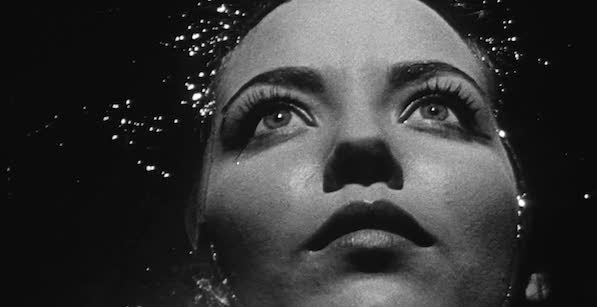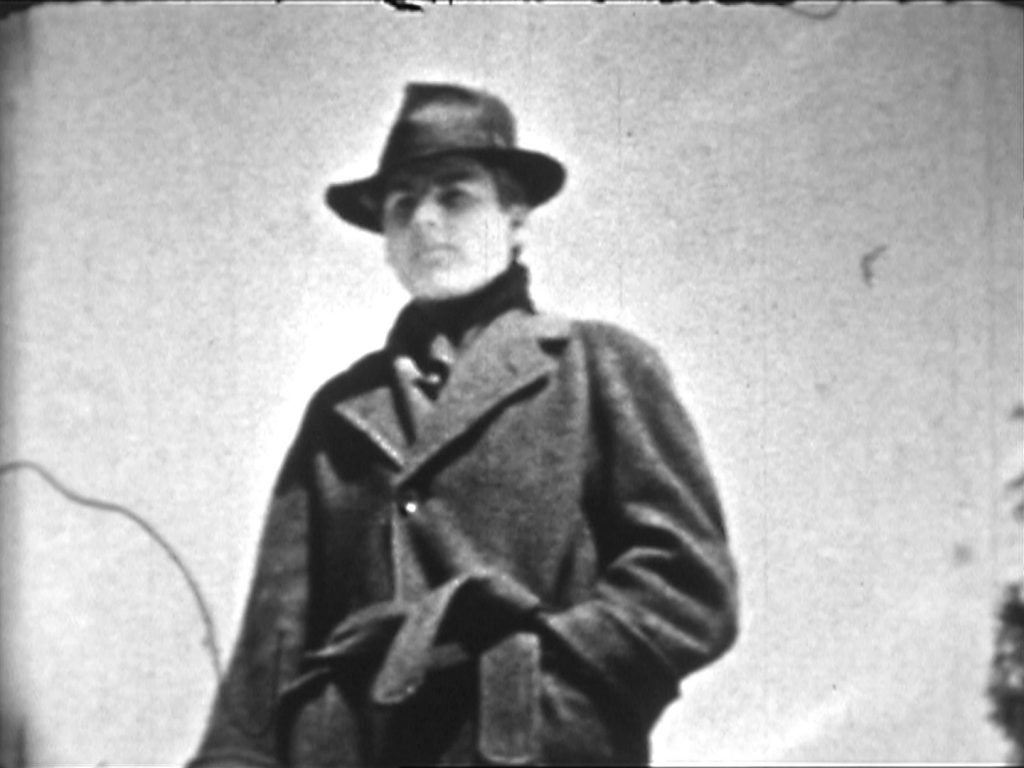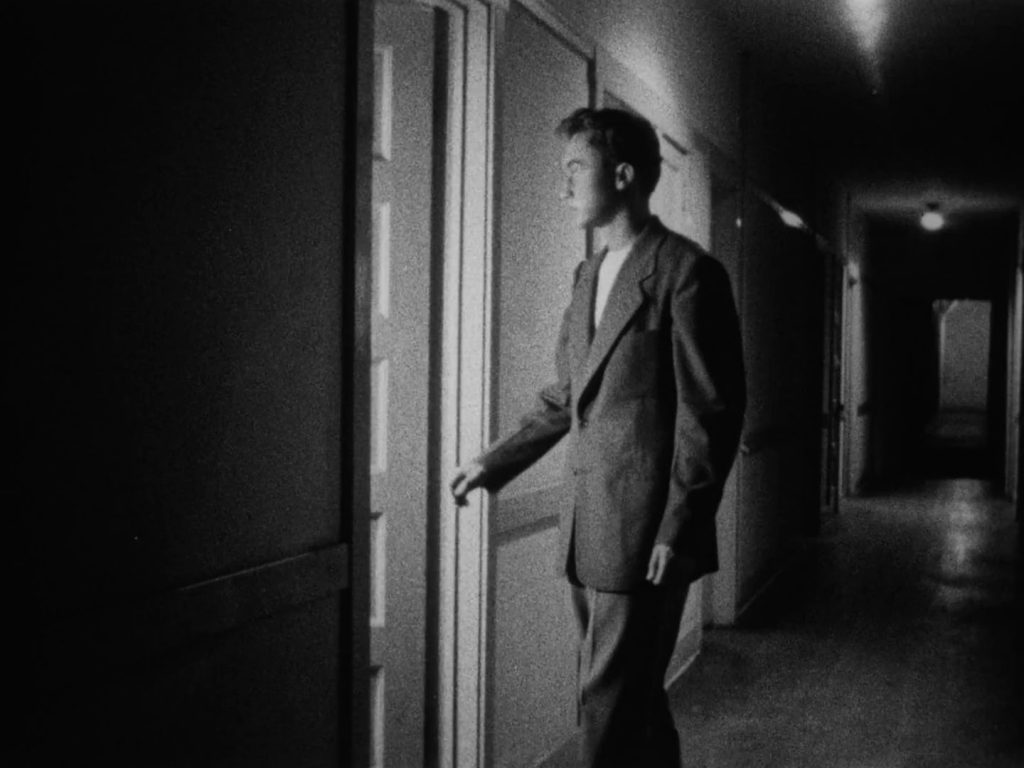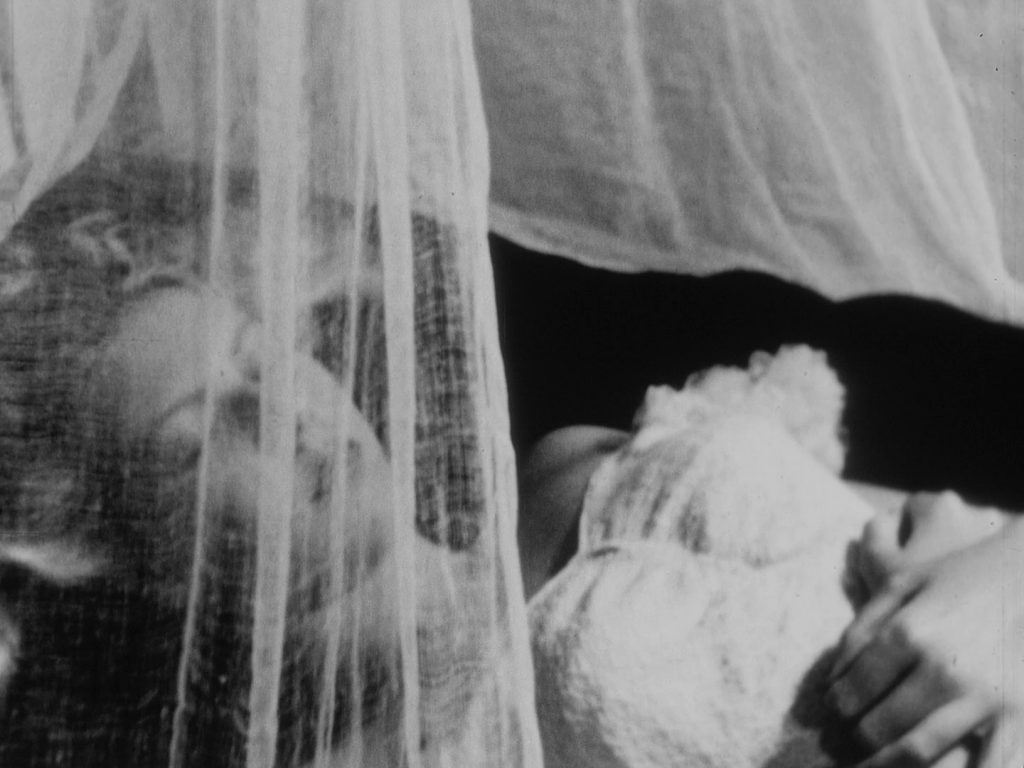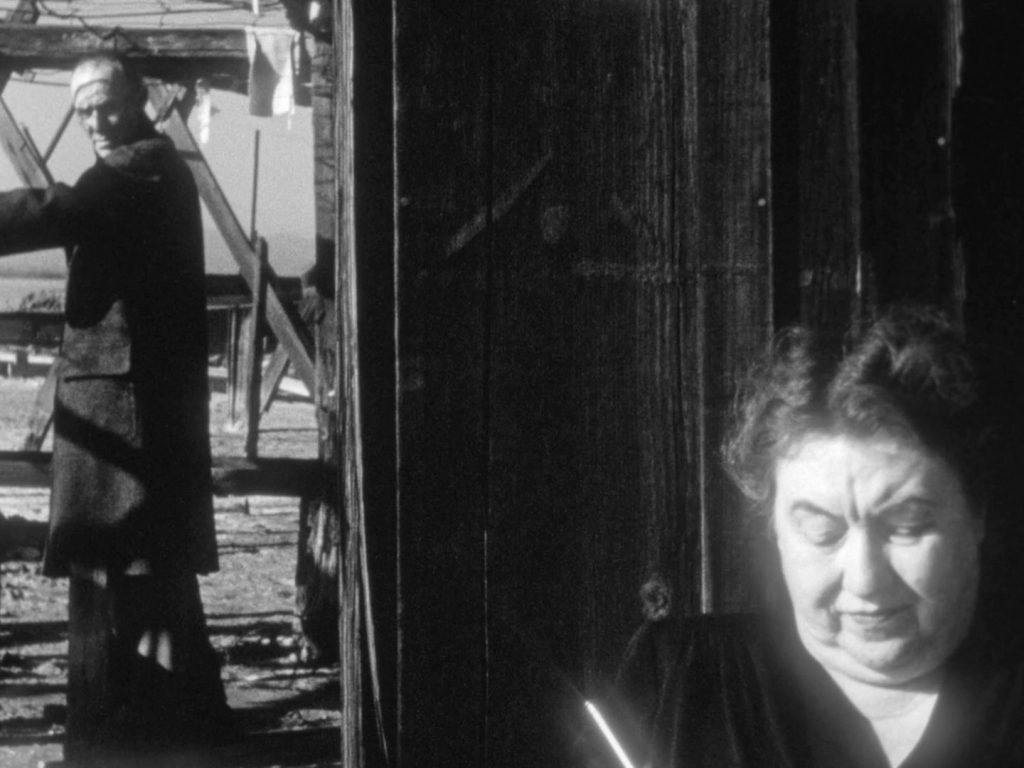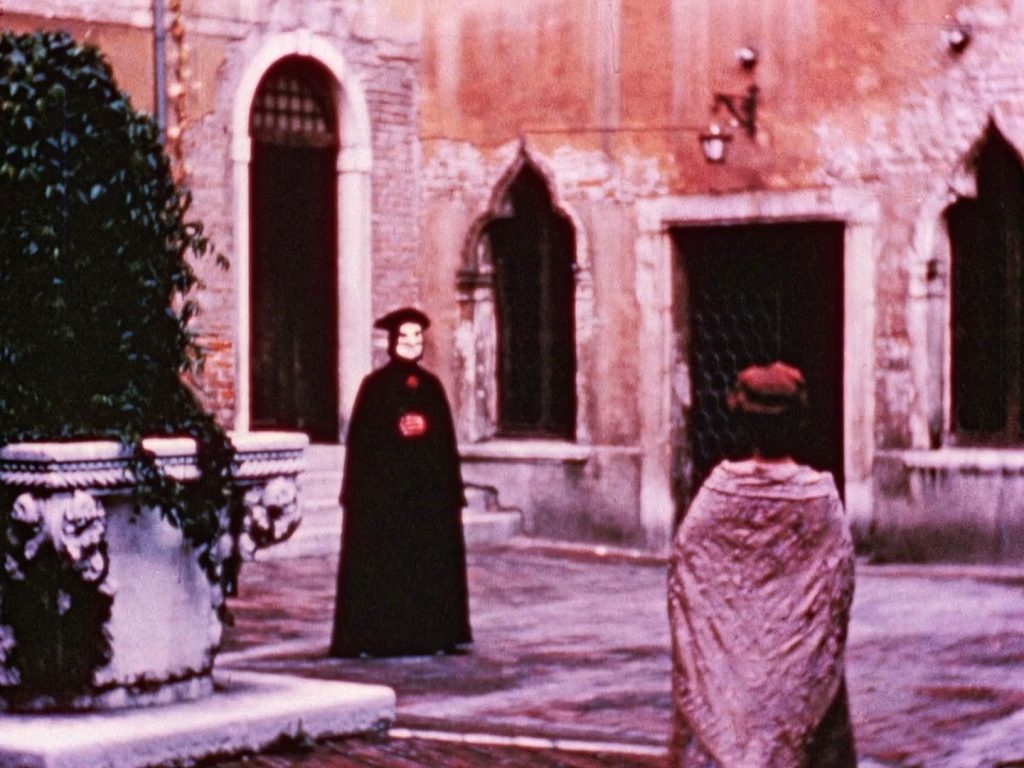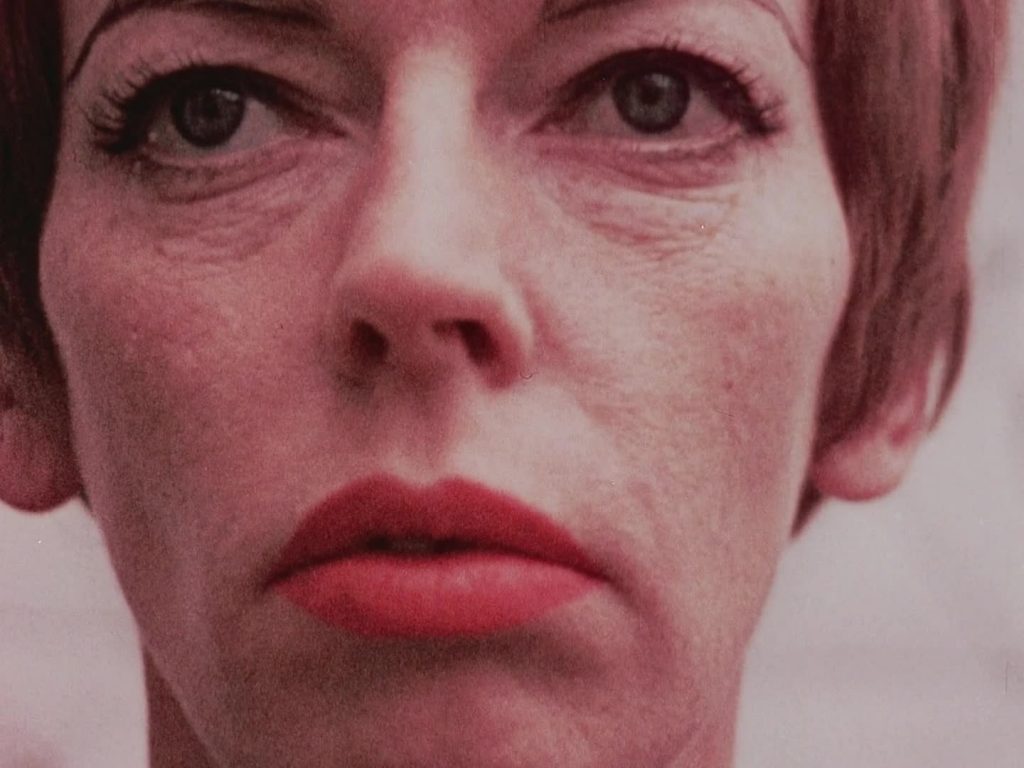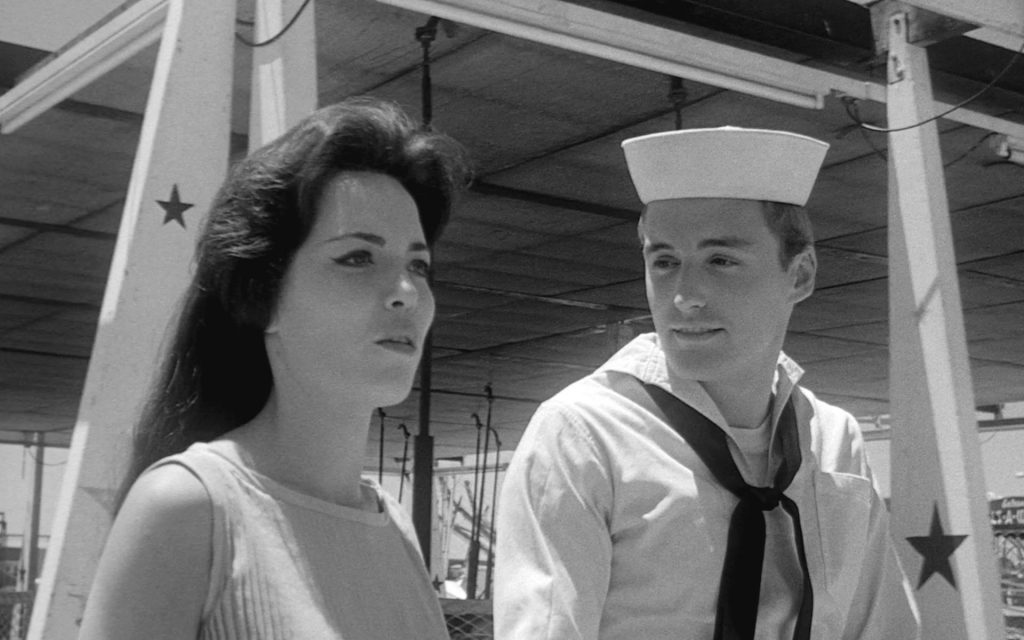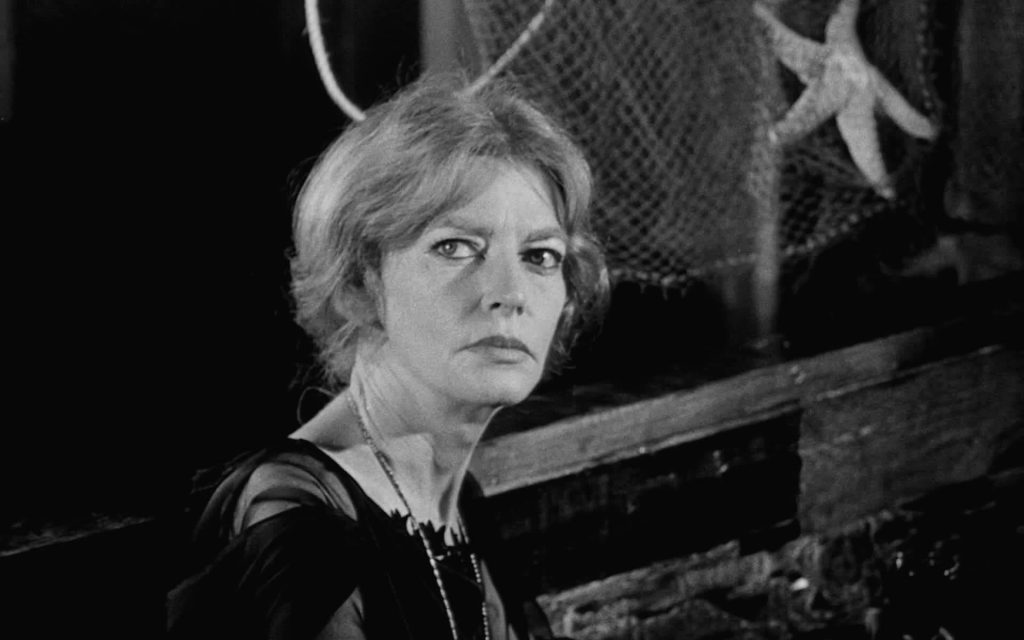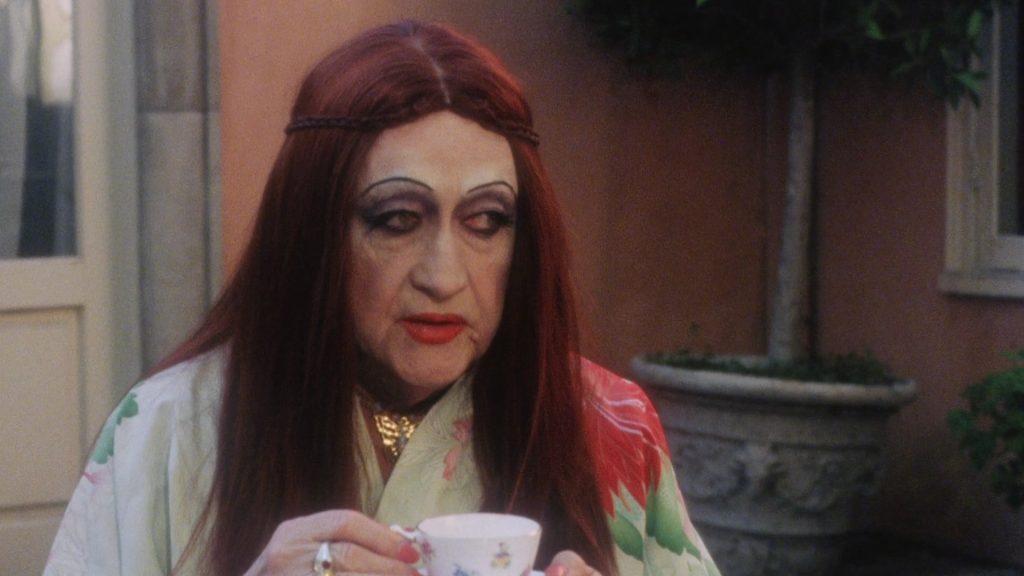Curtis Harrington came from a tribe of experimental filmmakers who found filmmaking itself–the very act of recording and projecting motion picture images—to be an act of magic. He was fascinated by Edgar Allan Poe and at age fourteen took a stab at making The Fall of the House of Usher as an experimental short. Later, at the end of his filmmaking career, he would revisit the material with an expanded narrative simplified to one word, Usher. His explorations of the otherworldly resulted in collaborations with artist and occultist Marjorie Cameron and his body of work as a whole lays out frames of film almost as Tarot cards, divining new paths for his characters as well as his audience.
Harrington lensed Hollywood Babylon author Kenneth Anger’s film Puce Moment. Anger was a bizarre figure on his own, carrying forward the teachings of Aleister Crowley, and his film “magick” was in its montage and sound, a mixture of patterns, phrases, invocations and attempts to join with the cosmos, or the darker aspects of our collective interior. Harrington was a gentler sort, his explorations softly plumbing the black hole of loneliness rather than igniting those feelings with darkness.
Harrington’s Usher films map this theme, with incestuous family members keeping their home abuzz with their obscure secret. As Harrington found new tools to tell his stories, he moved from these sedentary stories to a series of “seeking” films, defined by the namesake dream-telling of Fragment of Seeking. Harrington stars in this one, playing a young man who tails a mysterious, nubile blonde as she makes her way through a house of many hallways, eluding our hero. Things are not what they seem to be, alas, and fate is locked: the dreamer can only tread along neural pathways to arrive at this predetermined location.
Harrington further unveils and obfuscates in Picnic, beginning with a group situation as one young man breaks off to attempt to meet with an illusory object of desire, an ethereal female seemingly dancing along the shore of the beach where his maybe-family is lunching. He moves seamlessly into the dreamworld, merely clawing his hands at the air against a cliffside and ascending without much visible effort, his family dispensed without care behind him. He wends his way through a mass of tangled branches until he finds his now more hard-formed possible paramour, who, like others in Harrington’s seeking films, is lured to an unforeseen end.
Family returns in Harrington’s next short, On the Edge, though in actual roles—as he had cast his parents in the short drama where a man grabs a roll of wool from a knitting woman on a porch and makes off with it, only to also meet an earlier-than-expected end. Death preoccupied Harrington throughout his first two decades of filmmaking, each film a reminder of the fragility of dreams, and of love. In The Assignation a masked man in Venice, Italy, winds his way through the canals in his search for his paramour. Once he finds her, we can only assume what comes next.
From here Harrington took a massive side turn before resuming this obsession in The Wormwood Star by documenting artwork, poetry and the personage of Marjorie Cameron, already a fixture in the underground avant-garde set, having previously appeared prominently in Kenneth Anger’s Inauguration of the Pleasure Dome. Her face is unlike most faces, unlike most women, and her hairline easily delineates her person, which Harrington draws quick attention to with his particular camera placements and framing.
Marjorie is quite definitely a woman of “magick.” The objects in her studio, her manner of dress, hair, makeup—and, of course, of presentation—tell all who care to know that she is working in the world of the occult. Already deep in the teachings of Aleister Crowley, picked up from her husband and Ordo Templi Orientis lodge head, Jack Parsons, a friend of L. Ron Hubbard no less, she is a woman of strength and knowledge. Harrington mostly documents Cameron and her art, with music providing the more otherworldly element though he jumps into a pre-Polanski‘s Macbeth effect by training his camera on Cameron’s mirror reflection, wanting to take us in her world Alice in Wonderland-style. The woman obviously had an influence; his first feature film brought her along as a most mysterious figure whose presence is never fully revealed.
Night Tide is the amalgam of the underground and avant-garde filmmaker’s obsessions until the time in his life when Hollywood broke that all apart and he refashioned himself as the maker of more directly narrative films. Every element of his previous work pops up again in this story fantastique of a young man who has fallen in love with a circus attraction, Mora, a woman who appears to be a mermaid. Portrayed by then twenty-five-year-old Dennis Hopper, the character of the bewitched young man is perfectly written as a sailor, and played with a naivete that suits the job. Hopper keeps his man attuned to the off-kilter behavior of his love while blotting out the townspeople’s gossip about her being a strange sort of murderer, luring men in only to kill them. Dennis Hopper’s Johnny Drake refuses to believe it.
The joy Harrington must have had helming Night Tide is evident in his homage to his friend Maya Deren, even including a bizarre dance of Mora’s that is gentle yet obscure, with a fire lighting her and tribespeople on the beach drumming along to her movements. And he also takes the sole character of The Wormwood Star, Marjorie Cameron, and gives her such a mysterious role, appearing here and there throughout the film, that even at the end of the film her machinations are not fully explained.
Mysterious women, voodoo entities, wanderings, dreams, pursuits. Curtis Harrington was master of his own magical acts, which propelled him into the world of Hollywood and television horror, forging enduring classics of those genres. Yet his most personal works, his short films and first feature, carry his strongest trademarks, and remain his triumphs as much as his more well-known long-form narratives.

